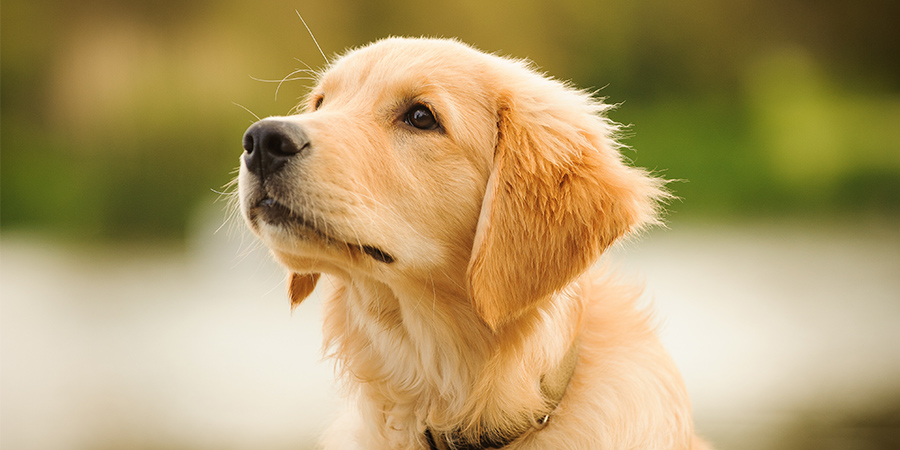Tails
Making pet parenting easy

Golden Retriever
This entry was posted on 2014-08-13.
The Golden Retriever is classified within the sporting category of dogs. Initially bred for hunting companionship and used to retrieve waterfowl. Making an excellent house pet the Golden Retriever is obedient, loving and extremely faithful.
Traits
• Weight: Males: 29-34 kg, Females: 27-32 kg
• Height: Males: 58-61 cm, Females: 55-57 cm
• Coat: Straight or somewhat wavy
• Colour: Any tones of cream or gold
• Litter size: 5–10 puppies
• Life span: 10-13 years
Physical Characteristics
Slightly longer then it’s height the Golden Retriever has a strong, muscular build which draws attention to its well-matured forequarters and hindquarters, giving it a powerful smooth stride. Its neck is strong and its head is wide. It’s coat that comes in any tones of cream or gold, is thick and water-resistant and can be straight or somewhat wavy.
Personality and Temperament
Extremely playful, the Golden Retriever lives up to its name by thoroughly enjoying a game of fetch and transporting objects about in its mouth. Calm indoors and active outdoors the Golden Retriever is an ideal house pet for any kind of family.
The Golden Retriever's love of human fellowship is highly regarded. It is compliant and loyal and amongst dogs almost the easiest to train. Enthusiastic about learning new things and able to easily follow new commands makes it a delight to train.
Care
The Golden Retriever sheds throughout the year so as to encourage this process and to lessen the amount of fur around your house you should brush it at least twice a week. It’s able to live outdoors but is far happier indoors close to its family. Additionally you must allow time for daily exercise to ensure that your Golden Retriever uses its natural energy and is then calm when play time is over.
Health
The lifespan of the Golden Retriever is about 10-13 years. The minor health issues its susceptible to include eye disorders, hypothyroidism, elbow dysplasia, seizures, sub-aortic stenosis (SAS) and mast cell tumors. On occasion the Golden Retriever is also prone to Osteosarcoma. The major health issues include canine hip dysplasia (CHD), lymphoma, skin problems and hemangiosarcoma. In order to identify these ailments in the early stages these tests are available: hip, heart, eye, elbow and thyroid.
History & Background
Often acknowledged for the establishment of the Golden Retriever Lord Tweedmouth, in the middle of the 19th century resided beside the Tweed River, north of the Scottish border. At the time there were many different types of retriever breeds, produced for the purpose of hunting game. Lord Tweedmouth saw further potential in these dogs and decided to develop a new breed that could withstand the unfavorable conditions within the area.
He started out by crossing a Tweed Water Spaniel with a Wavy-Coated Retriever; which resulted in four puppies that were capable of hunting birds. He then crossed the yellow Wavy-Coated Retriever with black retrievers, Bloodhounds, Tweed Spaniels and setters. Dogs with similar attributes were produced including a distinctive yellow flat coat. In the beginning of the 1900s Lord Tweedmouth's sons took some of these dogs to the United States. The breed was officially recognized as the Golden or Yellow Retriever in 1912. Since then the breed has grown in popularity throughout America.
In 1927 the Golden Retriever was recognized by the American Kennel Club and in the United States to this day it remains as one of the most sought after dog breeds.
Nutrition
Click here to see what breed specific dog food we sell now.



